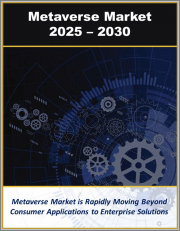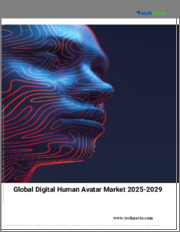
|
시장보고서
상품코드
1522937
메타버스의 지속가능성, 예측(-2029년)Sustainability in the Metaverse, Forecast to 2029 |
||||||
메타버스 테크놀러지의 지속가능 개발이 새로운 성장 기회를 창출
Frost & Sullivan은 메타버스를 최종사용자가 사회적 존재감과 공간 인식을 가지고 광범위한 가상 경제에 참여할 수 있는 영구적인 3D 세계와 시뮬레이션의 네트워크로 정의하고 있습니다. 메타버스의 핵심 개념은 단순하지만 흥미롭습니다. 무한한 사람들이 실시간으로 서로 상호작용할 수 있는 영구적인 3D 세계입니다.
이러한 가상 상호작용은 소비자에게만 국한되지 않습니다. 선도적인 기업은 이미 디지털 툴을 통해 고객과의 관계를 구축하고 있습니다. 이러한 기업에게 메타버스는 몰입형 경험, 고객과의 실시간 상호작용, 개인화 기능을 통해 향상된 기능을 제공하는 자연스러운 다음 단계입니다.
메타버스는 회의 및 컨퍼런스 참석, 교육 기관으로의 이동, 이벤트 및 레크리에이션을 위한 출퇴근과 같은 물리적 작업에 대한 의존도를 줄이고, 이러한 활동으로 인한 환경적 영향을 줄일 수 있습니다. 에너지 효율적인 기술과 재생 에너지의 활용은 메타버스 인프라(컴퓨팅 파워 및 스토리지)를 구축하는 데 필요한 에너지 공급과 관련된 문제를 해결하는 데 도움이 될 수 있습니다.
메타버스는 아직 초기 단계에 있지만, 지속가능한 활동을 도입하고 오늘날의 환경 문제를 해결하는 데 기여할 수 있는 잠재적 기회를 제공합니다. 이 분석에서는 메타버스의 지속가능한 발전을 위한 세 가지 핵심 요소, 주요 촉진요인과 억제요인, 그리고 세계 기업이 어떻게 사회의 지속가능성 문제를 해결하고 있는지를 살펴봅니다. 또한 환경 친화적인 메타버스에 대한 투자를 통해 새로운 수입원과 성장 기회를 창출할 수 있는 헬스케어, 생명과학, 소매 및 E-Commerce, 제조 등 주요 산업별 주요 기술 동향과 구상에 대해서도 살펴봅니다.
목차
전략적 필수 요건
- 왜 성장이 어려워지고 있는가?
- The Strategic Imperative 8(TM)
- 메타버스의 지속가능성에 대한 주요 전략적 필수 요건의 영향
- Growth Pipeline Engine(TM)을 촉진하는 성장 기회
메타버스의 지속가능성 : 개요
- 지속가능개발
- 메타버스 설명
- 메타버스의 지속가능성 : 개요
- 성장 촉진요인
- 성장 억제요인
- 메타버스의 지속가능성 : 3개 어프로치
- 메타버스 환경의 지속가능성
- 메타버스 사회의 지속가능성
- 메타버스 경제의 지속가능성
- 메타버스의 지속가능성 : 분석, 업종별
메타버스의 지속가능성 : 주요 테크놀러지 동향
- 지속가능 메타버스 : 주요 테크놀러지 동향
- 주요 테크놀러지 동향 : 데이터센터
- 주요 테크놀러지 동향 : 인공지능
- 주요 테크놀러지 동향 : 디지털 트윈
- 주요 테크놀러지 동향 : 블록체인과 NFT
- 주요 테크놀러지 동향 : 반도체 부품과 XR하드웨어
지속가능성 구상 예 : 주요 메타버스 기업별
성장 기회 유니버스
- 성장 기회 1 : 친환경 NFT 또는 친환경 대체품의 검토
- 성장 기회 2 : 거버넌스를 위한 시스템과 프로세스의 구축
- 성장 기회 3 : 에너지 메타버스에 대한 투자
- 자료 리스트
- 면책사항
Sustainable Development of Metaverse Technologies Creates New Growth Opportunities
Frost & Sullivan defines the metaverse as a network of persistent 3D worlds and simulations in which end users possess a sense of social presence and spatial awareness and can participate in an extensive virtual economy. The central concept of the metaverse is straightforward but intriguing: A persistent 3D world in which an infinite number of people can interact with one another in real time.
This virtual interaction will not end with consumers; forward-looking businesses already use digital tools to build customer relationships. For these players, the metaverse is a natural next step that offers improved capabilities through immersive experiences, live customer interactions, and personalization features.
Metaverse will reduce our reliance on physical tasks such as attending meetings or conferences, traveling to educational institutions, and commuting for events or recreation, decreasing the environmental footprint of many of these activities. Energy-efficient technology or the use of renewable energy sources can help with issues associated with providing the energy needed to set up the metaverse infrastructure (compute power and storage).
Although the metaverse is still in its infancy, it offers potential opportunities to develop sustainable practices and contribute to addressing today's environmental challenges. This analysis examines the metaverse's three pillars of sustainable development, key drivers and restraints, and how global companies address social sustainability challenges. It also discusses important technology trends and initiatives across key industry verticals, including healthcare and life sciences, retail and eCommerce, and manufacturing, to generate new revenue streams and growth opportunities by investing in a greener metaverse.
Table of Contents
Strategic Imperatives
- Why Is It Increasingly Difficult To Grow?
- The Strategic Imperative 8™
- The Impact of the Top 3 Strategic Imperatives on Sustainability in the Metaverse
- Growth Opportunities Fuel the Growth Pipeline Engine™
Sustainability in the Metaverse: An Overview
- Sustainable Development: A Critical Imperative Frost & Sullivan 2023 its Decision-maker Survey
- Metaverse Explained
- Sustainability in the Metaverse: An Overview
- Growth Drivers
- Growth Restraints
- Sustainability in the Metaverse: Three Approaches
- Environmental Sustainability in the Metaverse
- Social Sustainability in the Metaverse
- Economic Sustainability in the Metaverse
- Sustainability in the Metaverse: Analysis by Verticals
Sustainability in the Metaverse: Key Technology Trends
- Sustainable Metaverse: Key Technology Trends
- Key Technology Trends: Data Centers
- Key Technology Trends: Artificial Intelligence
- Key Technology Trends: Digital Twins
- Key Technology Trends: Blockchain and NFT
- Key Technology Trends: Semiconductor Components and XR Hardware
Examples of Sustainability Initiatives by Key Metaverse Players
- Examples of Sustainability Initiatives by Key Metaverse Players
Growth Opportunity Universe
- Growth Opportunity 1: Consider Eco-friendly NFTs or Greener Alternatives
- Growth Opportunity 2: Create Systems and Processes for Governance
- Growth Opportunity 3: Invest in the Energy Metaverse
- List of Exhibits
- Legal Disclaimer



















